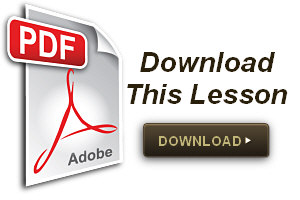The Next Step: Finding a Database for You
April 25, 2013 by EJRT
Filed under Archives, Articles, Genealogy Research Resources, Online Tools
 Genealogy is all about connections — the connections between you and your ancestors, between your ancestors and their historical context, and amongst all of the facts and records that together help to weave the tartan of your past.
Genealogy is all about connections — the connections between you and your ancestors, between your ancestors and their historical context, and amongst all of the facts and records that together help to weave the tartan of your past.
Just as no one resource can provide all your answers, no one tool will solve all your problems. For every piece of the puzzle you need to improvise a new solution — so, to avoid spinning your wheels against a brick wall it’s best to get acquainted with all of your options.
Genealogy Beginner can get you started with knowledge of all the best practices and methodology, but where do you go from there? An easy first step is an online service like Ancestry.com, where you can easily search birth, marriage, and death Records
, browse their Obituary Collection
, and then start your free family tree
to keep it all organized.
There are many such services, each with their own unique archives and site features. Ancestry.com is perhaps more user-friendly collaborative than other services, in that once you enter in some basic information the service actively works to fill in the blanks, drawing upon both public records and the work of other members. If the suggestions sound right, just click to add them to your own tree — which then becomes part of the cycle, as the more complete your tree the more the site’s search engine has to work with.
The best part of services like this is that they give you a start in collecting your thoughts without asking for much of an investment, either in terms of time or money. In the case of Ancestry.com, the basic subscription is fairly inexpensive; to get overseas records you will need to upgrade, which is a little more. If you decide it’s not what you need, you can just cancel and try another service; all you’re out is maybe ten, fifteen bucks. If you cancel within 14 days, there’s no charge at all.
What they’re banking on is the appeal of their interface and search tools — and you know what? It’s a good bet. What would be hours of manual, tedious research is reduced to a few seconds of behind-the-scenes pattern-matching. There is of course a limit to any online database, and the wow value here should be over by the time your trial period is up — but even for an experienced genealogist the elegance and dynamism of their tools can be hard to give up.
So, it’s worth a shot. Try a membership at Ancestry.com, and if it’s not your thing then at least you’ll better know your options. If it is, there’s one more tool under your belt.
Lesson 1: Beginning Genealogy – The Big Five
May 10, 2011 by EJRT
Filed under Free Trial
![]()
I know. Who can get excited about Standards of Proof? Only anyone who wants to avoid the disappointment of false starts, wasted effort, and common fledgling mistakes.
After months of work, there is nothing more disheartening than discovering that your results are in question. Consider the lady who took a round trip to Scotland to visit the town of her ancestors, only to realize on her return that she had visited the wrong town — or the two fellows who enjoyed a long relationship as distant cousins; after many years they discovered they were not related at all. They’re still friends, so it worked out okay. Even so, one can imagine the upset.
Even I have experienced this issue; once after toiling for ages with a very frustrating brick wall, another genealogist presented me with what I thought might have been a breakthrough. When I contacted him, however, I found that I was his source of information on the issue — even though my website clearly states that the evidence for the individual in question is unproven.
Unfortunately discovering that all of one’s long hours are wasted, and that now one needs to start again, is a situation that many a beginning genealogists will face. Why? Only because they did not know the Big 5 Basic Guidelines of the Genealogical Proof Standards. Not knowing that some sources may contain errors, and that not all research — either in print or online — is credible and factual, can be a costly and time-consuming mistake.

